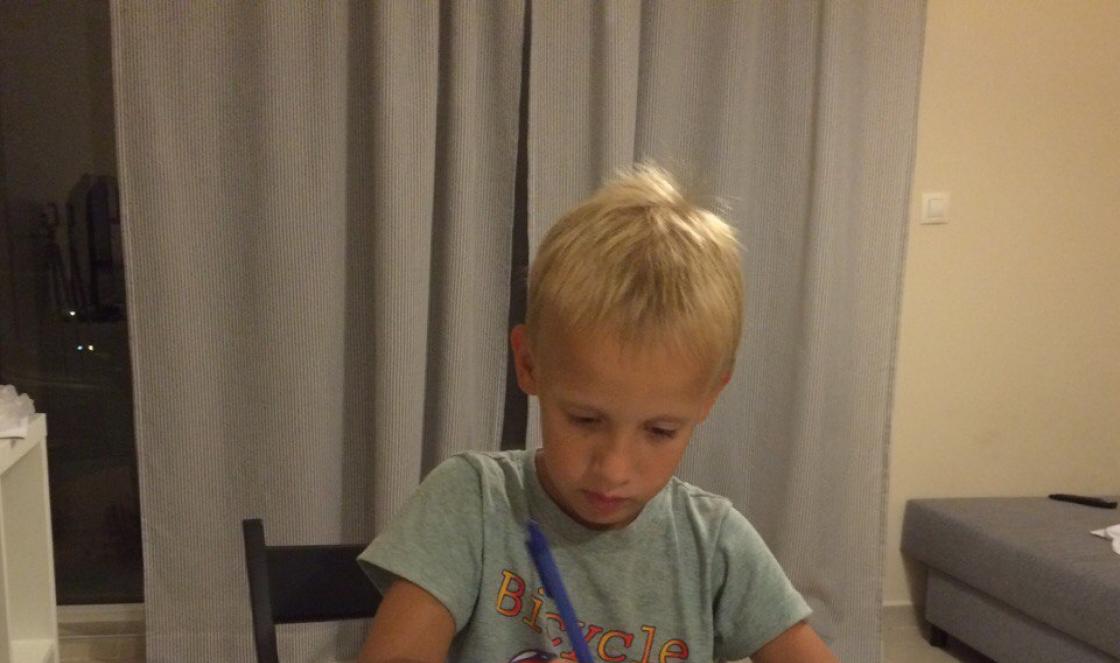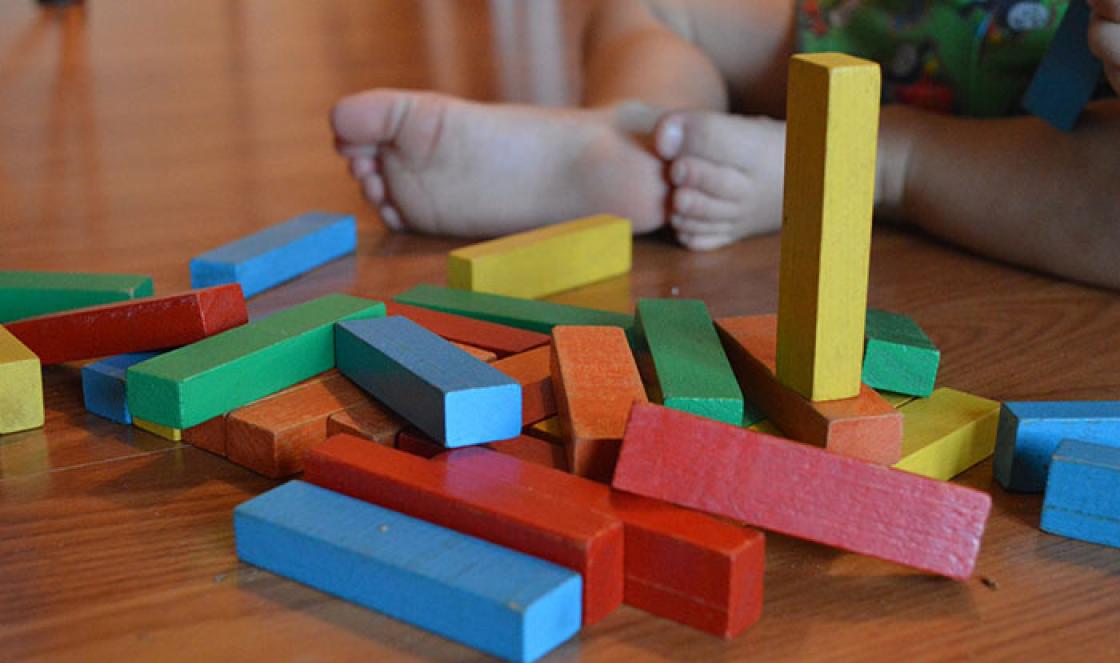All about the benefits of mental arithmetic for development, basic methods for mastering mental arithmetic for preschool and primary school children. Games and secrets of successful classes.
What distinguishes man from the rest of the living world is his intellectual superiority. In order for it to become obvious not only to oneself, but also to others, the brain must be constantly trained. One of the methods of training the brain is mental arithmetic.

Best age to start learning
Most experts believe that the best age is between 3 and 5 years. By the age of 4, a child can easily master basic arithmetic operations (addition and subtraction). By the age of five, a child can easily learn to solve simple examples and problems.
Preparing for training
First of all, the child must develop the concept of number. For a child, this category is an abstract concept. At first, it is difficult to explain to a child what a number or figure is.
Anything can be chosen as educational material: favorite blocks, balls, soft toys, cars, etc. It is important that the baby understands that you can not only play with them, but also count them.
This should not be in the form of a boring and intrusive lesson; the child simply will not understand it. Everything should look like a game, as if “by the way.”
It is important not to miss the time when the child perceives everything as an exciting game, then learning will become an enjoyable experience for him.
Don’t forget the main thing correctly – classes should be interesting and enjoyable!
How to teach correctly?
- Teaching a child the basics of mathematical calculation should only take place in a playful way and if the child wishes.
- Learning to count should be done in a fun way and continuously (every day). The baby's visual and tactile memory is involved.
- Classes must be structured in a clear algorithm and have a system. Let’s say that first the understanding of “one” and “many” is consolidated, then “more” and “less”.
- It is important to explain the difference between the concepts of “more”, “less”, “equal”.
- In a playful way, for example, while going down the stairs, teach your child ordinal counting from 1 to 10;
- Show your child on objects how the spoken numbers relate to the real quantity;
- Try to explain to your child in elementary life situations how the number of objects increases or decreases, for example, another car came to one car, you got two cars, etc.
If you think that it is better to entrust the formation of such an important skill to professionals, then we recommend that you enroll your child in mental arithmetic courses. The results of the classes will pleasantly surprise you!
Learning to count to 10
It is necessary to introduce an understanding of quantity into the child’s daily life; this requires constant emphasis on objects, mentioning their number.
It is useful to learn counting rhymes with your child, poems in which numbers are mentioned.
To teach a child to count from 1 to 10, it is necessary to use various educational materials.
Currently, there are many animated educational videos in which, in a child-friendly form, your favorite cartoon characters play and teach your child to count.
The child’s visual memory is used here, and information is also perceived by ear.

Expert opinion
By imitating the actions of cartoon characters, the baby learns to count. You should also study using printed manuals.
Working with your child to prepare educational material can be helpful in preparing for learning to count to 10. You can cut out circles or cubes together and then count them. In addition to learning, joint creative tasks help unite the family.
Simple tasks will help your child not only depict the above numbers and form an idea about them, but also practice fine motor skills, hand-eye coordination and attention.
Learning to count to 20
In addition to the mechanical method of learning further counting, using the same methods as were used when learning to count from 1 to 10, the child needs to explain the concepts of “ten” and “one”.

Expert opinion
Klimenko Natalya Gennadievna – psychologist
Practicing psychologist at the municipal antenatal clinic
Everything should be in the form of a game, not a boring activity. To do this, you can take 20 candies and 2 boxes. You need to invite the child to put 10 candies in one box, counting out loud.
The adult should tell the child that this is called “ten”. Having moved an empty box to the box with “ten”, you need to put the rest of the candies there one by one, and say the count out loud: 11, 12, 13 and so on until 20.
This game can be accompanied by a demonstration of cards on which the numbers being studied will be depicted.
 It is important to explain to your child that after 10, all numbers will consist of two digits.
It is important to explain to your child that after 10, all numbers will consist of two digits.
The first of which is “ten” (the first box of chocolates), and the second one (the second box of chocolates).
The child must understand the system in which all the numbers follow one another: 11 after 10, 12 after 11, etc.
We need to continue to actively use educational cartoons, counting rhymes, songs, coloring books with tasks, etc. - everything that was used when learning to count from 1 to 10.
When the child’s understanding of “ten” and “one” is formed, then he can master counting further up to 100.
Don't forget to pay attention to others too
Teaching methods at different ages
For children 2-3 years old
It is necessary to instill in the child, in a playful way, an understanding of counting and the initial skills of applying it to objects. For example, we count fingers on one hand, ask you to bring one, two... objects. We instill the concepts: “many”, “little”, “big”, “small”.
For children 4-5 years old
 You need to use the baby’s desire to help his parents with household chores.
You need to use the baby’s desire to help his parents with household chores.
Putting toys together in a box, you can count them or ask the child to bring one or more plates from the table.
Gradually, the baby should develop the concept of “one” and “many”, “less”, “more”, “wider”, “narrower”.
Also, the baby should be unobtrusively introduced to understanding the shape of objects: a round ball or a square cube, etc.
Contact learning is much more effective; at this moment the baby senses the object, several zones of object perception are activated, and learning is easier.
Kids compare “many” and “one”. Different objects need to be compared in order to develop an understanding of their properties, without overloading the baby with the characteristics of the object. Gradually, the child himself must combine different objects according to one characteristic (small - large, long - short).
Gaming techniques and didactic games are widely used in classes (it is proposed to put objects on pictures, sample cards, etc.).
For children 5-6 years old
Children learn to compare adjacent sets element by element, that is, compare sets that differ in the number of elements by one.
The main methods are overlay, application, comparison. As a result of this activity, children should learn to establish equality from inequality by adding one element, i.e. increasing, or removing, i.e. decreasing, the set.
For 1st grade students
First of all, the child masters counting in groups of 2, 3, and 5, and is gradually brought to an understanding of the decimal number system.
 At this age, much attention is paid to mental arithmetic, for which teaching methods with a playful bias are used.
At this age, much attention is paid to mental arithmetic, for which teaching methods with a playful bias are used.
The technique allows the operation of addition and subtraction within 100 to be brought to automaticity, and in the mind.
When used, children learn to count while playing, using cards with dots, and the child’s visual memory develops. There are other methods of teaching children to count.
For 2nd grade students
In the second grade, you can continue to use the techniques that were used in teaching in the first grade. It is important to choose one teaching method to make it easier for the child to learn the material.
The materials used at home should correlate with those used by the teacher at school. In the form of a game, you can quickly solve addition and subtraction examples with two-digit numbers in your head.
If you still have questions about teaching counting to schoolchildren, we advise you to watch the following video:
Oral counting based on the composition of the number
Knowing the composition of a number, a child can verbally perform addition and subtraction operations. Understanding, for example, that the number 8 is made up of 5 and 3, or 1 and 7, or 6 and 2, or 4 and 4, he can solve addition and subtraction problems with that number without thinking.
- Place a certain number of items into 2 boxes(for example, take 8 peas and arrange them in different ways: 5+3, 1+7, etc.). Items need to be constantly changed so that the child does not lose interest.
- Invite your child to complete the number to the correct number. For example, hang 5 toys on the tree and ask to add 8 toys to the tree, etc.
- Add the first term to 10. That is, the child already knows that 10=8+2. That is, he needs to “take away” the number 2 from the second term.
- It calculates how much more needs to be added (based on knowing the composition of the number 5 = 2+3);
- Calculate 8+2+3=13,
The child will use the same technique (bringing to 10) when subtracting.
Having mastered these methods, the child will subsequently use them when solving examples with numbers between 100 and 1000.
Learning by memorizing tables
When mastering mental counting, a child must memorize many tables to the point of automatism; to make this easier, you can use coloring books, counting rhymes, songs, etc.
N. Zaitsev’s technique is also used, eidetics techniques are used - fairy tales or pictures are invented using images - numbers.
Using Computational Techniques
The ability to find the optimal way to calculate the result in your head is the result of numerous and regular training. It is important to master certain techniques that allow you to quickly make calculations.
For example, in primary school they often use the frog game.
First, the “frog” (or “bird” - it doesn’t matter) jumps over the number 1, the child automatically subtracts or adds examples from 1, then through 2, etc.
Children are also introduced to other techniques for quick mental arithmetic:
- rearrangements of terms (for example, to count 2 + 57, it’s easier to swap numbers and add);
- counting in parts (14 + 8 = 14 + 6 + 2);
- reduction to a round number (44 – 15 = 44 – 4 – 10 – 1).
Learning in the game
Learning to count with cubes
Before you start, you need to understand how many cubes your baby can identify at the same time, without counting them one by one with his finger. When constantly playing with blocks, the child should be encouraged with kind words and prompted to the correct answer.
Game “Matching the dice to the numbers”
Cards must be made with numbers and cubes written on them. Gradually, the child, starting from 1 and 2, understands how many cubes correspond to a certain card.
Game “Dwarfs in the House”
 The game has different options. The house can be drawn on a board; it is divided into squares - “rooms”.
The game has different options. The house can be drawn on a board; it is divided into squares - “rooms”.
The “gnomes” will come and go to visit each other, sometimes “entering” and sometimes “leaving” the cage in the house. Children must answer how many “gnomes” are in which room.
Game “Silence”
The teacher writes examples on the board in one, two or more steps. The whole class is solving an example in their minds; when called by the teacher, the child silently writes the answer.
If he is faithful, all the other children clap once; if not, the children are silent. This game develops attention and strengthens discipline.
Lotto game
Depending on the material being studied, children solve various tasks placed on the cards. Cards can be made in the form of separate pictures; if the examples are solved correctly, an overall picture must be assembled.
Game “Arithmetic Mazes”
How does your baby feel about classes?
LovesDoesn't like
Children are asked to solve problems by mentally making their way through a circular maze with funnels with numbers to the center of the circle.
It shows a certain number that should be obtained if the examples are solved correctly.
Tasks can be of varying degrees of difficulty, depending on the material covered. There are several ways out of the maze.
Game “Catch the pilot”
An airplane is drawn on the board with loops in which examples are written. Children are divided into 2 teams. Team representatives solve tasks by writing down answers to the left and right of the loops. The winning team is the one that solves the task faster and more correctly.
Game “Circle Examples”
Children are given teaching material consisting of cards with examples of different content. They are placed in envelopes. There are 8 of them in each envelope. The solution to each previous example is the “key” to starting the next one.
Board games for skill development
The following board games allow you to teach your child counting in a fun, non-memorizing way, and then improve this skill. Your children won't even notice that learning is going on! The effectiveness of these games has already been confirmed by many parents - pay attention to the number of positive reviews.
“Fructo 10”
Suitable for children from 7 years old. Two difficulty levels.
“Fruit 10” forces you to perform many operations with numbers every minute!
“Turbo account”
Another bestseller, “Turbo Account,” instantly captivates both younger and older schoolchildren.
“Etazhiki”
In the game “Etazhiki” you will have to travel in a hot air balloon and practice your mental counting skills, and children will clearly understand the principle of moving through tens.
“Kotosovs”
In the game “Kotosovy” your children will learn to instantly determine the quantity without counting.
You can watch the rules and methods of the game in the following video:
You can also purchase several games at once to develop this skill and save money, in this case, turn your attention to the Game Library.
The most interesting techniques

- A child of preschool and primary school age gets tired quickly, so the ability to count must be instilled in a playful way.
- The child may not learn the material for a long time; you should not be nervous and shout or insult the child.
- The child should be rewarded for success with praise.
- Classes should be regular and frequent, with a clearly defined purpose.
- You need to choose a teaching method based on the individual characteristics of the child.
How to learn to count quickly in your head as an adult
- Learn to focus on details and mentally pronounce them.
- You should solve basic mathematical problems without resorting to a calculator, for example, in a store. Mathematical operations have their own characteristics, but they are not complex. You need to figure it out once, and then practice. This should happen systematically 5-10 times a day.
- Master simple mental counting techniques and set yourself daily brain training goals. There are many mobile applications on the Internet with brain training tasks.
In the next video, a mathematician will tell you how you can learn to count in your head.
Why do I call my method easy and even surprisingly easy? Yes, simply because I have not yet come across a simpler and more reliable way of teaching kids to count. You will soon see this for yourself if you use it to educate your child. For a child, this will be just a game, and all that is required from parents is to devote a few minutes a day to this game, and if you follow my recommendations, sooner or later your child will definitely start counting in a race with you. But is this possible if the child is only three or four years old? It turns out that it is quite possible. In any case, I have been doing this successfully for over ten years.
I outline the entire learning process further in great detail, with a detailed description of each educational game, so that any mother can repeat it with her child. And, in addition, on the Internet on my website “Seven Steps to a Book,” I posted video recordings of fragments of my classes with children to make these lessons even more accessible for playback.
First, a few introductory words.
The first question that some parents have is: is it worth starting to teach your child arithmetic before school?
I believe that a child should be taught when he shows interest in the subject of study, and not after this interest has faded away. And children show interest in counting and counting early; it only needs to be slightly nourished and the games imperceptibly made more complex day by day. If for some reason your child is indifferent to counting objects, do not say to yourself: “He has no inclination for mathematics, I was also behind in mathematics at school.” Try to awaken this interest in him. Just include in it what you have missed so far: counting toys, buttons on a shirt, steps when walking, etc.
Numbers have become firmly established in all areas of human life, so it is not surprising that more and more users are choosing mathematical games for relaxation and learning. And don’t think that flash drives in this category will be of interest only to kids.
Of course, math games are primarily about teaching counting and simple operations with numbers. But, believe me, this is just the beginning, because mathematical flash projects cover all areas of exact science. In a fun and playful environment, users can easily learn how to accurately multiply and divide, get acquainted with the patterns of amazing fractals, and understand the logical relationships of many processes.
To make the games exciting and interesting not only for kids, the creators have provided a variety of solutions for plots and design. This is a completely childish format with funny characters and tasks, and strict ink “adult” boards with examples, diagrams, number grids and intricate problems. Want to learn more about math than just basic counting? Then launch mathematical “flash drives” on the Igroutka portal and start playing!
An excellent selection of arithmetic tests and puzzles from the Quicksave portal is an effective educational material that will help prepare children for entering school. Preschoolers will learn to count with interest, moving forward in their learning step by step, successfully coping with the tasks of educational online toys.
Fun math skills practice
All problems are solved in a game format - this helps to quickly remember important information. Popular tutorials for the youngest gamers allow children to fully unleash their potential: develop logical thinking, improve memory and concentration, boost creativity and perseverance.
Users will not need to buy the product, activate it or install it on a personal computer - browser-based flash games without registration allow you to enjoy the process for free, without being distracted by unnecessary actions. The most sophisticated aesthetes will appreciate the unparalleled graphics of the latest new products from Quicksave.
Gameplay Features:
- An extraordinary storyline with the search for the correct answer from several proposed options to move to the next level allows the player to be as relaxed as possible and grasp the essence of the task with lightning speed;
- The difficulty of missions increases depending on the student's progress;
- Time limitation and the desire to find out the correct answer become the main motivational factor that contributes to further progress.
The ability to count correctly will help tomboys navigate correctly in any life situation. Numbers, numbers, geometric shapes - this is an unknown world that is only opening up to young inquisitive minds. The main task of parents is to show their child the right direction in which to develop. A collection of logical computer entertainment is the most accessible and understandable way to realize your plans.

We play and count with pleasure
Share your emotions from completing the next intellectual quest with your friends. You will receive an additional charge of positive energy by experimenting with imaginative and logical thinking - very soon you will feel the amazing effect of mastering the material you have covered. If you regularly play exciting games from the category: , the result will not be long in coming.
An excellent selection of arithmetic tests and puzzles from the Quicksave portal is an effective educational material that will help prepare children for entering school. Preschoolers will learn to count with interest, moving forward in their learning step by step, successfully coping with the tasks of educational online toys.
Fun math skills practice
All problems are solved in a game format - this helps to quickly remember important information. Popular tutorials for the youngest gamers allow children to fully unleash their potential: develop logical thinking, improve memory and concentration, boost creativity and perseverance.
Users will not need to buy the product, activate it or install it on a personal computer - browser-based flash games without registration allow you to enjoy the process for free, without being distracted by unnecessary actions. The most sophisticated aesthetes will appreciate the unparalleled graphics of the latest new products from Quicksave.
Gameplay Features:
- An extraordinary storyline with the search for the correct answer from several proposed options to move to the next level allows the player to be as relaxed as possible and grasp the essence of the task with lightning speed;
- The difficulty of missions increases depending on the student's progress;
- Time limitation and the desire to find out the correct answer become the main motivational factor that contributes to further progress.
The ability to count correctly will help tomboys navigate correctly in any life situation. Numbers, numbers, geometric shapes - this is an unknown world that is only opening up to young inquisitive minds. The main task of parents is to show their child the right direction in which to develop. A collection of logical computer entertainment is the most accessible and understandable way to realize your plans.

We play and count with pleasure
Share your emotions from completing the next intellectual quest with your friends. You will receive an additional charge of positive energy by experimenting with imaginative and logical thinking - very soon you will feel the amazing effect of mastering the material you have covered. If you regularly play exciting games from the category: , the result will not be long in coming.





